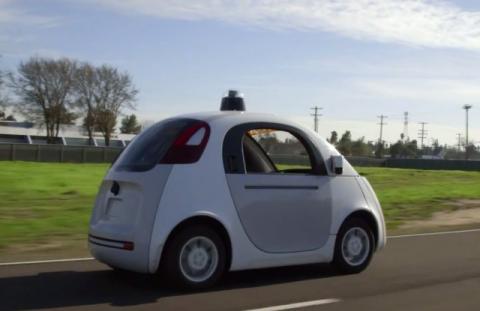-
Tips for becoming a good boxer - November 6, 2020
-
7 expert tips for making your hens night a memorable one - November 6, 2020
-
5 reasons to host your Christmas party on a cruise boat - November 6, 2020
-
What to do when you’re charged with a crime - November 6, 2020
-
Should you get one or multiple dogs? Here’s all you need to know - November 3, 2020
-
A Guide: How to Build Your Very Own Magic Mirror - February 14, 2019
-
Our Top Inspirational Baseball Stars - November 24, 2018
-
Five Tech Tools That Will Help You Turn Your Blog into a Business - November 24, 2018
-
How to Indulge on Vacation without Expanding Your Waist - November 9, 2018
-
5 Strategies for Businesses to Appeal to Today’s Increasingly Mobile-Crazed Customers - November 9, 2018
Electric robot-driven cars could be here sooner than we think
While this may seem fantastical, it may be only a matter of time before it becomes reality.
Advertisement
Taxis capable of driving without human interaction could play a significant role in reducing greenhouse gas emissions, a new study reveals.
To illustrate the concept, consider a single passenger with no luggage versus a party of four passengers with suitcases. A single person will need a small autonomous auto while a family leaving for vacation will require a larger, less fuel-efficient vehicle.
Right-sizing assumes a number of taxis managed by just one entity.
An estimated 19 percent of US Carbon dioxide emissions now come from cars and light trucks, Greenblatt said. “That gives us a factor of two savings, since smaller vehicles means reduced energy use and greenhouse gas emissions”, Greenblatt stated in a press release.
Autonomous electric taxis will also be powered by a cleaner electric grid, which contributes to lower emissions.
In the year 2030, booking a robot taxi from Uber or Google (or whichever company has won the battle to establish the most efficient self-driving fleet) could also help the environment. But with all those considerations, Greenblatt said that self-driving cabs “enable much bigger energy savings”.
The researchers also looked into economic factors, considering 2030 as a feasible date for the deployment of the robocabs.
At 12,000 miles per year, electric vehicles were still expected to be more expensive than owning and operating petrol-driven cars.
“You don’t often find that, where the cheapest is also the greenest”, said Jeff Greenblatt, co-author of the study, in an interview with Popular Science.
The scientists did not try to estimate how widespread this technology would be in 2030.
“The future of transportation energy consumption depends on how the system is used by people”, Brown wrote. Such distances are not uncommon for a taxi to travel in one year.
Researchers from Berkeley have found that we would be enjoying several benefits if we were to replace human-driven taxis with autonomous, self driving taxis. The study was conducted by a team of researchers from Berkeley Lab who wanted to see how much greenhouse gas was emitted by different automobiles.
Advertisement
That’s one of the findings of a study published Monday in Nature Climate Change by scientists from the Lawrence Berkeley National Laboratory. But one thing the Department of Energy-sponsored report doesn’t touch upon is how the radical disruption of the taxi industry would affect the people already embedded in it-dispatchers, cab company workers, and, most of all, the roughly 178,000 taxi drivers in the country.




























